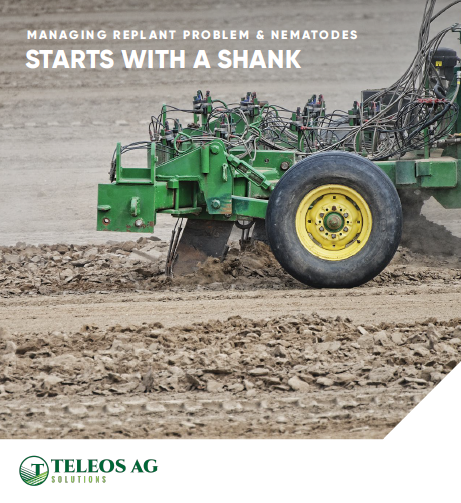It’s Been A Tough Year For Pacific Northwest Growers

James R. McFerson
So far, 2015 is not treating the Pacific Northwest tree fruit industry all that well. We knew the record apple crop of 2014 across the country was going test our storage, shipping, and marketing capabilities. We did not need the additional challenges over the past few months: export trade restrictions, port slowdowns, phytosanitary barriers, and the horrible reality of the first significant food safety incident for fresh apple. Individually and collectively, these issues inflicted additional and financially significant challenges.
Soft Fruit, Soft Market
Squishy soft markets for Red Delicious and Golden Delicious were arguably more predictable, but the reality of packing sheds’ disposing of entire rooms of product both made for bad news and further depressed markets and attitudes. Track hoes, chain saws, and grafting crews will have plenty of work across large acreages in Washington State in the coming months, as older, unsustainable blocks come out.
Then along came the 2015 sweet cherry crop, coinciding with what seems to be a rapidly accelerating manifestation of climate change. Record temperatures and drought conditions accelerated, compressed, and truncated what set up to be a moderate and potentially very profitable crop.
As long as I am whining, it would be appropriate to point out that orchard and packing shed labor continues to be a frightening variable. The only question now seems to be how quickly things reach the calamity level. While currently increasingly helpful to many in the Pacific Northwest nowadays, H-2A programs are likely only forestalling that calamity.
On a brighter note, pear producers in both 2014 and this season appear to be able to maintain a small but profitable edge. Per capita consumption continues to increase and a recent boost in contract prices for processed pears is a very positive exception to returns for apple and cherry.
But, then, there is Honeycrisp, and a few other new apple cultivars. Add to that Regina and a few other new sweet cherry cultivars. These innovations are generally not just profitable, but highly profitable, with prices at retail holding though the season.
In spite of the production and postharvest handling challenges of many of these innovations — well-described for Honeycrisp in the February issue of American Fruit Grower® and Western Fruit Grower™ — I believe the sustainability of tree fruit producers and the satisfaction of our consumers relies heavily on new genetics, both rootstock and scion.
Check out why we are breeding apples for climate change also.
What We Need To Be Doing
In the meantime, however, we must aggressively implement the very best horticultural management to mitigate the sort of weather and climatic stresses 2015 has been bringing. Despite those stresses, we need to deliver high quality fruit to the handler. Then, we must continue to focus on ensuring postharvest handling practices to zealously preserve as much fruit quality as possible, with logistics that move fruit products swiftly and carefully to point of sale.
If there is anything the Pacific Northwest industries are doing exceptionally well right now, I believe it is at this point in the supply chain — postharvest.
A quick tour of packing sheds this summer will reveal a broad commitment to efficient and effective postharvest handling from sortingand shipping, and from bin hauling, to the dump tank, to storage, to sorting, to shipping.
Cleanliness and sanitation levels are higher than ever, and continue to improve. Storage regimes with and without SmartFresh, and/or Harvista, have never done a better job of enhancing quality retention. Sorting lines are larger, faster and infinitely more discriminating. Robotic palletizers look like they are enjoying themselves.
The same can besaid of packing shed employees. In my community, Wenatchee, WA, working on a cherry sorting line is almost a rite of passage. It provided my daughter and lots of young people like her a chance to earn a decent wage, but just ask her — she could not wait for each day to end.
That has changed considerably. Newer packing sheds are a lot brighter, a lot less noisy, and a lot safer. Improved equipment allows more fruit to be handled more quickly by fewer people under much more comfortable conditions. All this has happened a little too late for my daughter’s cherry sorting career, but it’s a new deal for current packing shed employees , as this recent article from Dave Eddy documents http://is.gd/HighTechBoom.
How All This Change Impacts Your Consumer
It is also a new deal for the consumer. These new purpose-built packing sheds, with modern equipment, a more efficient work force, and implementation of the latest postharvest physiology research help the entire U.S. tree fruit industry deliver a product that is of measurably higher quality, still affordable, and safe.
While the challenges of food safety in general and the Food Safety Modernization Act in particular escalate, I am certain our resilient tree fruit industry across the country will deal with it as successfully as we have dealt with the postharvest challenge of consistently delivering the consumer products of the highest quality.
On another positive note: In 2015, we seemed to achieve adequate control of spotted wing drosophila. Even better, brown marmorated stink bug has not made it to Eastern Washington yet. I am not looking forward to one of my columns’ having to deal with that menace, but with the right kind of pest management research, I suspect it will be another challenge our industry learns how to handle.










